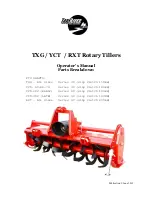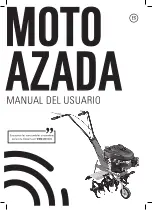
31
•
Clean the water filter (see chapter 7 “Water
connections”).
•
Check the unit operating parameters and compare
them with previous values.
•
Keep and maintain a maintenance sheet, attached to
each HVAC unit.
All these operations require strict observation of adequate
safety measures: individual protection garments, compliance
with all industry regulations, compliance with applicable
local regulations and using common sense.
13.3 - Level 3 (or higher) maintenance
See note below.
The maintenance at this level requires specific skills/
approval/tools and know-how and only the manufacturer,
his representative or authorised agent are permitted to
carry out these operations. These maintenance operations
concern for example:
•
A major component replacement (compressor,
evapo-rator)
•
Any intervention on the refrigerant circuit (handling
refrigerant)
•
Changing of parameters set at the factory (application
change)
•
Removal or dismantling of the HVAC unit
•
Any intervention due to a missed established mainte-
nance operation
•
Any intervention covered by the warranty
NOTE: Any deviation or non-observation of these mainte-
nance criteria will render the guarantee conditions for the
HVAC unit nul and void, and the manufacturer, Carrier
France, will no longer be held responsible.
13.4 - Tightening of the electrical connections
13.4.1 - Tightening torques for the main electrical connections
Screw type
Designation
in the unit
Torque
value, N·m
Screw on bus bar, customer connection
M10
L1/L2/L3
40
M12
L1/L2/L3
70
Soldered screw PE, customer connection (M12)
PE
70
Screw on fused disconnect inlet zones
Fused disconnect 1034061/M10, customer connection
L1/L2/L3
40
Fused disconnect 1034061/M12, Y/D outlet
QS10-
70
Fused disconnect 3KL7141
QS10-
70
Fused disconnect 3KL7151
QS10-
70
Tunnel terminal screw, compressor contactor
Contactor 3RT104-
KM-
5
Contactor 3RT105-
KM-
11
Contactor 3RT106-
KM-
21
Tunnel terminal screw, current transformer
Size 2 (3RB2966-)
TI-
11
Compressor earth terminal in the power wiring control box
M12
Gnd
70
Compressor phase connection terminals
25
M12
1/2/3/4/5/6 on EC-
23
M16
1/2/3/4/5/6 on EC-
30
Compressor earth connection
Gnd on EC-
25
Tunnel terminal screw, water pump disconnect
Disconnect switch 3RV101-
QM90-
2,5
Disconnect switch 3RV102-
QM90-
2,5
Disconnect switch 3RV103-
QM90-
4
Tunnel terminal screw, water pump contactor
Contactor 3RT102-
KM90-
2.5
Contactor 3RT103-
KM90-
4
13 - STANDARD MAINTENANCE
Air conditioning equipment must be maintained by profes-
sional technicians, whilst routine checks can be carried out
locally by specialised technicians. See the standard
EN 378-4.
Simple preventive maintenance will allow you to get the
best performance from your HVAC unit:
•
improved cooling performance
•
reduced power consumption
•
prevention of accidental component failure
•
prevention of major time-consuming and costly
inter-ventions
•
protection of the environment
There are five maintenance levels for HVAC units, as
defined by the AFNOR X60-010 standard.
13.1 - Level 1 maintenance
See note below.
Simple procedure can be carried out by the user:
•
Visual inspection for oil traces (sign of a refrigerant
leak)
•
Check for removed protection devices, and badly
closed doors/covers
•
Check the unit alarm report when the unit does not
work (see report in the 30XA/30XW Pro-Dialog Plus
control manual).
•
Check the clogging state of filters of aeration openings
of the control box.
General visual inspection for any signs of deterioration.
13.2 - Level 2 maintenance
See note below.
This level requires specific know-how in the electrical,
hydraulic and mechanical fields. It is possible that these
skills are avail-able locally: existence of a maintenance
service, industrial site, specialised subcontractor.
In these cases, the following maintenance operations are
recommended.
Carry out all level 1 operations, then:
•
At least once a year tighten the power circuit electrical
connections (see tightening torques table).
•
Check and re-tighten all control/command connections,
if required (see tightening torques table).
•
Check the differential switches for correct operation
every 6 months.
•
Remove the dust and clean the interior of the control
boxes, if required. Check filter cleanliness (if present).
•
Check the presence and the condition of the electrical
protection devices.
•
Replace the fuses every 3 years or every 15000 hours
(age-hardening).
•
Replace the control box cooling fans (if used) every
five years.
•
Check the water connections.
•
Purge the water circuit (see chapter 7 “Water
connections”).






































